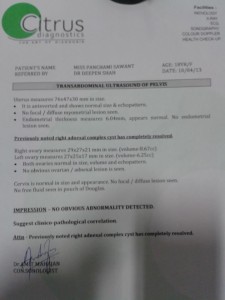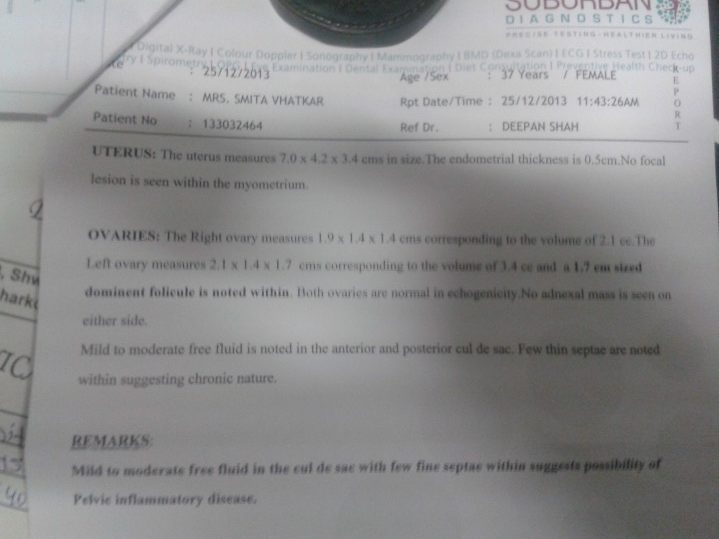Leucorrhoea is an abnormal vaginal discharge, its a very common complaint of women seen in our practice.
The discharge may range from what is called excess of normal to one which is a part of wide spectrum of ailments.
LET US SEE WHAT EXACTLY LEUCORHHOEA IS
Leucorrhoea is an excessive vaginal discharge of whitish or yellowish which is thick and sticky.
Women experiencing from the excesssive vaginal discharge are worried and embarrassed about thier condtion and hesitate even to share this issue with their doctor.
PATHOPHYSIOLOGY OF LEUCORRHOEA
Normal vaginal secretion
The physiologic basis involved in normal vaginal secretion is dependant on tbe oestrogen level. With the rising oestrogen level, there is abundant secretory activity of endocervical glands and the superficial vaginal epithelium becomes rich in glycoprotein.
The mucoid secretion from cervical glands is normally small in amount. The carbohydrate radicle of the glycoprotein mucin is spilt off and fermented into lactic acid. Thus the mucus is secreted in excess and is passed out at the vulva.
Usually normal vaginal secretion is slimy and sticky and quantity is less.
Normally it may be a little excess in mid menstrual period during ovulation or just prior to menstruation., during pregnancy and during sexual excitement.
The secretion is mainly derived fro the glands of cervix , uterus, tansudation of vaginal epithelium and bartholins glands (during sexual excitement)
The Excess Vaginal secretion is due to
• Physiologic cause
•Cervical cause
• Vaginal cause
Physiological cause
The normal secretion is expected to increase in conditions when the oestrogen levels become high. Such conditions are.
•During puberty
Increased levels of endogenous oestrogen level leads to marked overgrowth of endocervical epithelium epithelium which may enroach onto the ectocervix producing erosion leadin to excess secretion.
•During menstrual cycle
Around ovulation peak rise of oestrogen leads to increase in the secretory activity of the cervical glands.
Excess secretion occurs In premenstrual pelvic congestion and increased mucus secretion from the hypertrophied endometrial glands.
•Pregnancy
Due to increased level of oestrogen causes increased vascularity. This leads to increased vaginal transudate and cervical gland secretion.
• During sexual excitement
Occurs when there is abundant secretion from bartholins glands.
CERVICAL CAUSE
Non infective cervical lesion may produce excessive secretion. Such lesions are cervical ectopy, chronic cervicitis, mucous poylp.
VAGINAL CAUSE
Increased vaginal transudation occurs in conditions associated with increased pelvic congestion. The conditions are uterine prolapse, acquired retroverted uterus, chronic pelvic inflammation, use of contraceptive pills or devices.
What are the probable causes of LEUCORRHOEA?
It is usually seen that the mucus membrane and glands of our body produce normal secretions, these secretions protect our body by forming a slimy lining over skin or mucus membrane.
Similarly vaginal glands secrete some secretions to keep the organs moist or lubricated and hence help our body to prevent from infections due to its acidic nature of secretions.
Leucorrhoea usually is not an acute condition, it does not develop all of a sudden. It usually denotes a devitalised state. It involves one or more parts of the reproductive organs.
When our body is loaded with toxins due to various causes organs such as skin, kidneys, ailmentary tract etc are not able to flush out the toxins. As a defense mechanism our body produces profuse discharge and eliminates in one or the other form of mucus membrane of uterus or vagina in the form of leucorrhoea.
Most common causes of leucorrhoea are as follows:
Infections
•Fungal infections
Candida albicans can easily flourish in most of cases and is usually caused due to poor hygiene. It gives rise to thick whitish or lumpy discharge accompanied by intense itching in the genital region.
•Parasitic infection
Trichomonas vaginalis is most common cause of leuchorroea. It affects the lining of both vagina and cervix causing infection.
•Bacterial infection
Bacterial infections are caused by chalmydia and gardnerella vaginalis. They cause sexually tranmitted diseases such as syphilis, gonorhoea HIV etc leading to abnormal vaginal discharge.
And other infections like Urinary tract infections, Pelvic inflamatory disease are also one of the cause
Of leuchorroea
•Hormonal Imbalance
Due to increased level of oestrogen it leads to increased vascularity causing increased vaginal transudate and cervical gland secretion leuchorroea.
•Poor hygeine
Unhygenic conditions cand lead to abnormal vaginal discharge especially during menstruation, unprotected sexual intercourse or excessive sexual indulgence etc.
•Injury
Any injury to the vagina or cervix or tissues during delivert can cause erosion and infections leading to abnormal vaginal discharges.
•Contraceptive Devices
Use of contraceptive devices have high risk of causing infections and irritations leading to leuchorroea.
•Malnutrition
Lack of nutrition, Anaemia, Weakened Immune System causes Leucorrhoea.
WHAT ARE THE SYMPTOMS OF LEUCHORROEA?
Usually a female patient with leucorrhoea presents with the following symptoms
- The most important symptom of leuchorroea is thick or thin whitish sticky vaginal discharge.
- If the leuchorroea is caused due to an infection, the discharge is yellowish or greenish in colour and has a very foul smell.
- The patient with leuchorrea usually presents with excessive itching, soreness and swelling of oedema.
- Presence of white discharge is noticed on the undergarments.
- Pain in the low back, abdomen, calf and thigh muscles is also one of the important characteristic symptom of leuchorroea.
- Burning in the genital tract, with burning urination and frequent urge to urinate.
- Patient presents with Weakness, lethargy due to profuse discharge.
- Painful sexual activity may be due to intense burning and soreness of the genital tract.
SOME USEFUL MEASURES TO MANAGE LEUCHORRHOEA
Usually we see in our practice when a female suffers from leuchorroea for a long time has generally very weak constitution.
Let us put light upon some useful measure which will help us to combat leuchorroea.
- Maintain proper hygeine of genital parts, cleaning the vulva after every act of urination,and sexual activity. Also hygeine should be equally maintained during menstrual periods.
- Use of cotton undergarments to prevent sweat from being retained in the genital tract, which may become a medium for infections leading to leuchorroea.
- Excessive douching of vaginal area should be avoided to maintain normal vaginal flora and balance the ph.
- Stay hydrated, drink atleast 2 to 3 litres of water to flush out toxins from your body.
- Maintain proper diet., include fresh fruits and vegetables in the diet., healthy herbs,spices, carbs, protien etc.
HOMEOPATHIC TREATMENT OF LEUCORRHOEA
While treating with homoeopathy its of utmost importance to understand the patient first and then her disease.
In homoeopathy we believe that the seat of the disease is on deranged vital force and functioning of normal human body and every individual has a different genome and so altogether a different constitution and each will responds in different manner to external environmental and social stimulus and insults on the organism as a whole.
Each has been subjected to different external inimical influences in different ways so each one has different peculiar differentiating trait and character, which has been embeded in gene through ages and generations to shape up a particular constitution and personality.
So its very important to find peculiar PQRS of each case, as each will respond differently to the same administered medicine, also requirement of the case varies due to vast difference in each constitution personailty and in homoeopathy we have the previlige to select individualised medicine or call it remedy.
So in my following article I have tried to throw some light also on the constitution, that is physical mental and miasmatic background, of each remedy type, this will helps reader understand which type of constitution personality will respond better to which remedy or to put it in other words which remedy works better in which type of constitution and personality trait
Now its not always necessary that all the symptoms of medicines should match the patient’s symptom completely but it is important that most of the major symptoms of disease that are concerning the patient most and the constitutional background should match at large if not exactly with the medinical grading of symptoms and the peculiars helps us to distinguish between finalising between two similar matching remedies.
HOMEOPATHIC MEDICINES FOR LEUCORRHOEA I FREQUENTLY USE IN MY PRACTICE
Graphites
Well suited to Pale Fair Stout Women with tendency towards obesity and is constipated most of the times in women who cant tolerate cold and all her symptoms are worse in cold climate; they have tendency towards delayed periods; women at climectric age(menopausal); blisters and crack on breast, nipples and lips; music makes her weep; swollen genitals with gushing leucorrhoea which isThin Pale Profuse White Excoriating Acrid, severe itching and burning of vulva Decided Aversion to Intercourse.
Natrum Muriaticum
Constitution has bad effects of suppressed anger fright and grief and prolonged intake of excessive salt lean thin emaciated especially in neck region malnourished anaemic with earthy complexion and has gouty diathesis. mentally patient is depressed due to suppressed emotions and consolation aggravates her want to cry in solitude ; tears with laughter ; leucorrhoea is Acrid Watery these subjects have suppressed menses.
Alumina
Suited to women who have tendency towards early menstruation; dry mucous membranes ; hasty hurried variable mood suicidal tendency on sight of knife or blood ; Leucorrhoea Acrid Profuse Transperent Ropy with burning aggravated after menstrual bleeding phase is over.
Pulsatilla
Pulsatilla women is regarded as the most feminine and beautiful personality in Homoeopathic materia medica it is Well suited to blonde hair fair thin female at puberty having mild gentle yeilding disposition highly emotional sad weeps while talking; timid fears to be alone ; likes sympathy and consolation ; fear of males; and has predominantly delayed suppressed and scanty menses but not necessarily in every case its variable; leucorrhoea id Acrid Creamy Burning with Diarrhoea during or after menses
Sepia
Typically suited well to women at climectric age(menopausal); and in who easily catches affections due to cold climate; tipically a tubercular diathesis and has liver affection; indifferent; doesnt like to work which can consume her time so doesnt like her job business or even she is averse to her own family for that purpuse; sad and gloomy; indolent; Leucorrhoea Yellow Greenish with Severe Itching clutching and stitching pain in vulva radiating upwards to uterus and umbilicus pain so severe that pt feels bearing down pressure feels that everything would escape through vulva; and keeps legs crossed to prevent it ; leucorrhoea with prolapse of uterus and vagina.
Platina
This constitution types have highest degree of superiority complex, they are too arogant, aggressive, too proudy , excessive sexual appetite, Leucorrhoea with nymphomania, Leucorrhoea with severe itching tingling in vulva.
Borax
Dreads downward motion , Leucorrhoea like egg-white with itching and sticking pain in vulva with sensation as if hot water was flowing out through vulva.
Trillium Pendulum
Women with Sanguine temperament excessive Lochia and tendency towatds menorahagia. Copious Yellow Stringy Leucorrhoea in women with tendency towards menorrhagia with severe pain in back and hips were broken into pieces.
Antimonium Crudum
Watery Acrid and Lumpy Leucorrhoea with tenderness in ovarian region.
Cantheris
Leucorrhoea in women with inflamatory uterine and ovarian affections, has history of frequent abortions, Copious leucorrhoea with tenacious mucous patient severe lancinating and tearing pain, leucorrhoea accompanies urinary tract infection with constant urge to pass urine frequent micturation and burning while passing urine.




